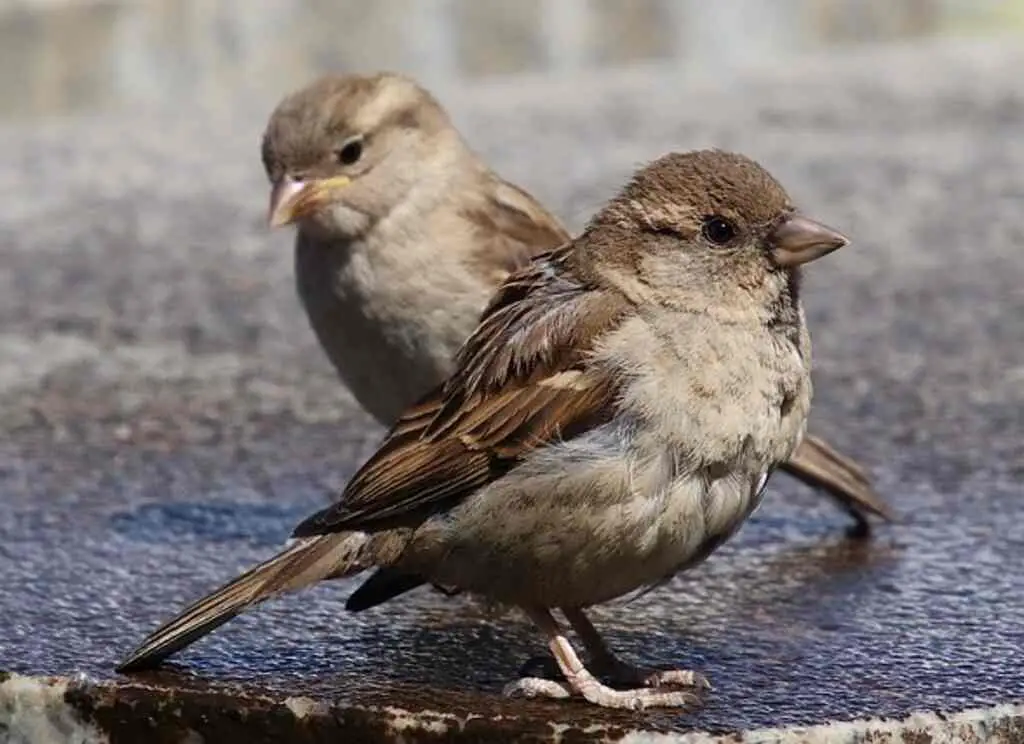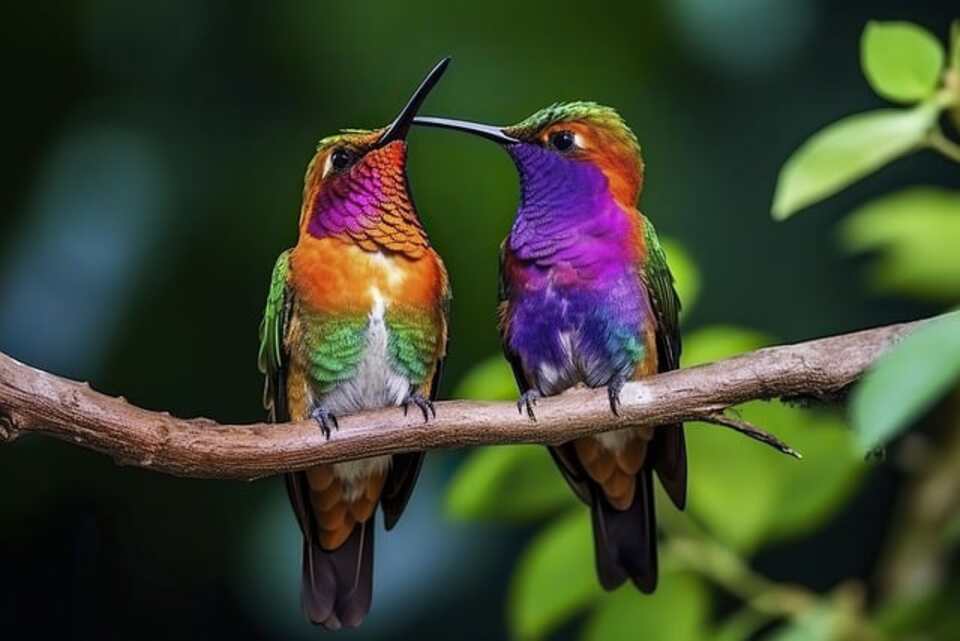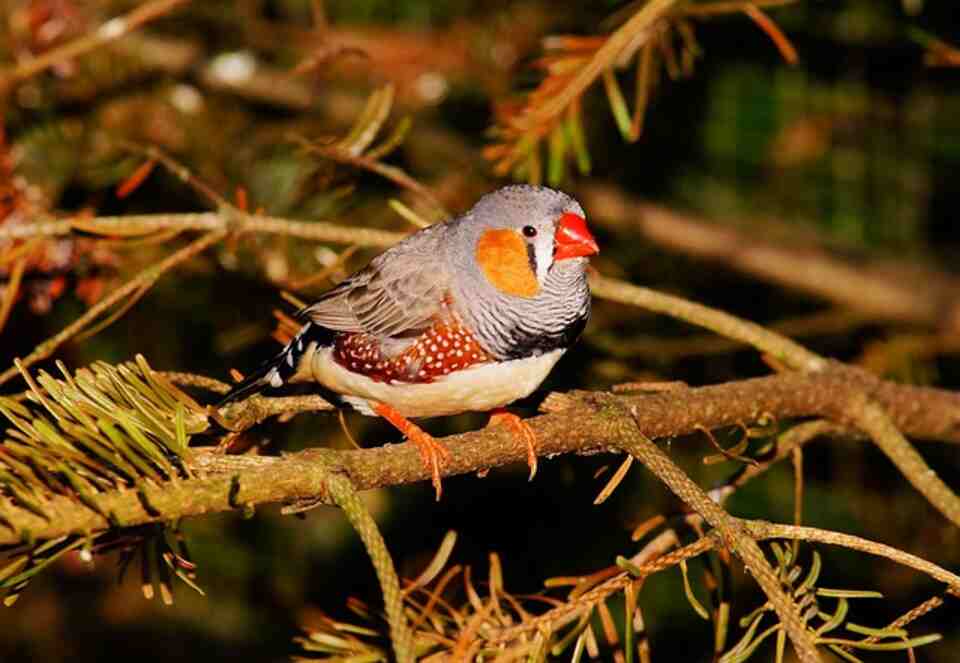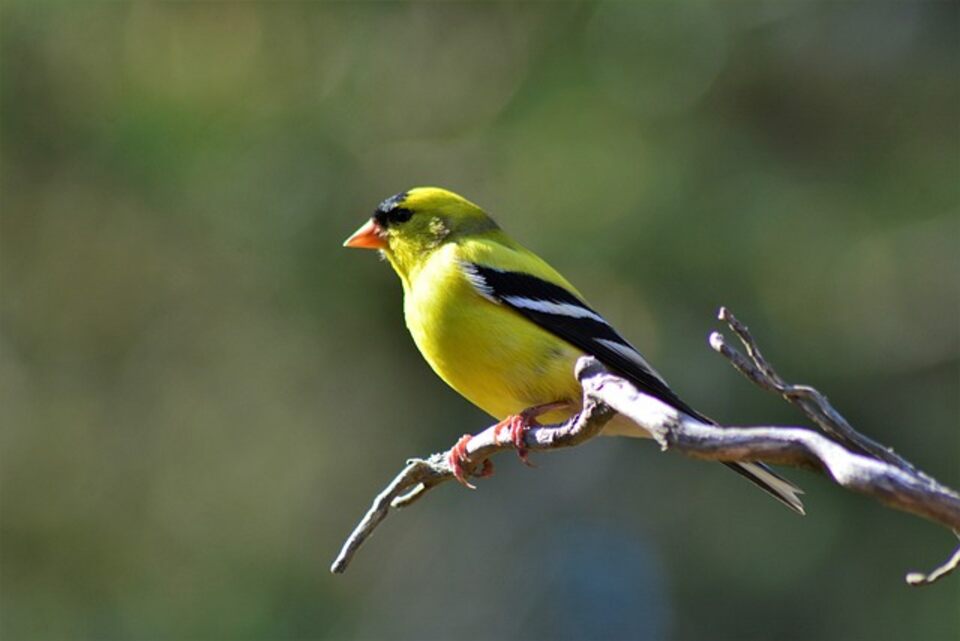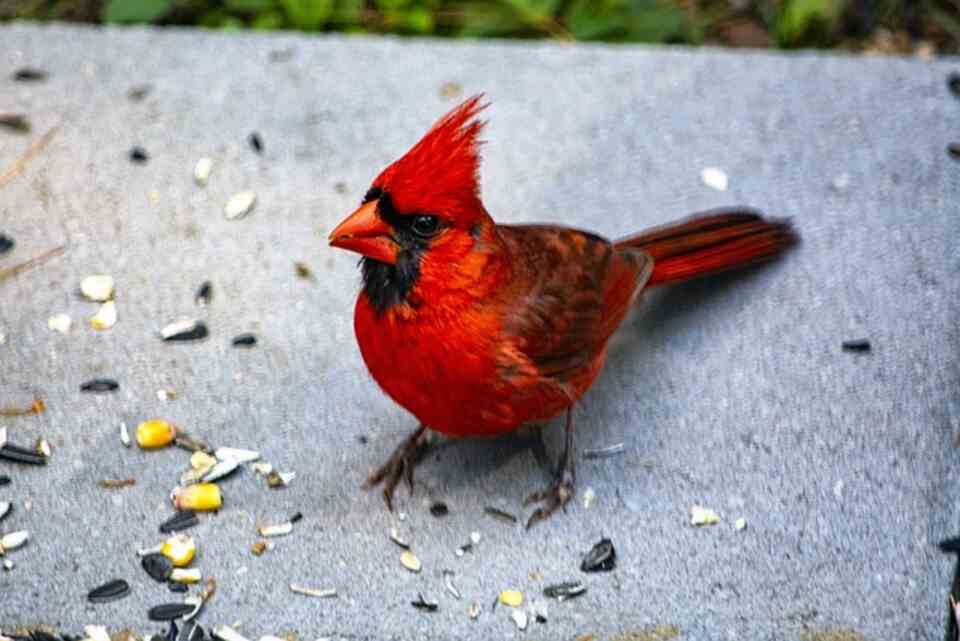Birds’ vibrant plumage has intrigued humanity for centuries, but the secrets behind their color shifts remain shrouded. How do birds achieve such stunning transformations? In this journey, we delve into the genetic, environmental, and behavioral forces shaping avian coloration. Prepare to uncover the science and splendor behind “How Do Birds Change Color.
Table of Contents
Overview of Bird Coloration
Birds are among the most visually striking creatures in the animal kingdom, displaying a stunning array of colors and patterns. The coloration in birds is primarily produced through two mechanisms: pigments and structural colors.
Pigments, such as melanins, carotenoids, and porphyrins, absorb specific wavelengths of light, resulting in colors ranging from browns and blacks to vibrant reds and yellows.
Structural colors, on the other hand, are created by the microscopic structure of feathers, which reflect and refract light to produce iridescent and non-iridescent colors like blues and greens.
Importance of Color Changes in Birds
Color changes in birds are not merely for aesthetic appeal; they play crucial roles in survival and reproduction. Seasonal color changes, often seen during molting, help birds adapt to different environments, providing camouflage or signaling readiness for breeding. Juvenile birds usually have different plumage than adults, which can reduce aggression from older birds and increase their survival chances.
In addition, vibrant plumage in males often attracts females, serving as a key factor in sexual selection. Changes in color can also indicate health and vitality, influencing social dynamics and mating success. Understanding these color changes provides insight into the complex interplay between genetics, environment, and behavior in avian species.
Mechanisms of Coloration
Bird coloration arises from two primary mechanisms: pigments and structural colors. These mechanisms can work independently or in combination, creating the vast diversity of colors observed in bird plumage.
Pigments and Structural Colors
Pigments are chemical compounds that absorb specific wavelengths of light and reflect others, creating visible colors. The primary pigments in birds are melanins, carotenoids, and porphyrins. Structural colors, however, are produced by the microscopic structure of feathers, which reflect and refract light to generate iridescent and non-iridescent colors. While pigments provide a consistent color regardless of viewing angle, structural colors can change with the angle of light.
Types of Pigments: Melanins, Carotenoids, and Porphyrins
- Melanins
- Melanins are the most common pigments in bird feathers, responsible for shades of black, brown, and gray.
- They are synthesized by the bird’s body and serve not only to provide color but also to strengthen feathers, making them more durable and resistant to wear.
- Carotenoids
- Carotenoids produce bright yellows, oranges, and reds. These pigments are obtained through the bird’s diet, primarily from consuming plants or organisms that have ingested plants.
- Birds cannot synthesize carotenoids on their own, so the intensity of these colors often reflects the bird’s diet quality and health. For example, the vibrant red of a male Northern Cardinal is due to carotenoids.
- Porphyrins
- Porphyrins are less common but can create a range of colors, including reds, browns, and greens. These pigments are derived from the breakdown of hemoglobin and other porphyrin-containing compounds in the bird’s liver.
- Porphyrins can fluoresce under ultraviolet light, adding a dimension of coloration visible to birds that can see UV light.
Structural Colors: Iridescence & Non-Iridescent Structural Colors
- Iridescent Structural Colors
- Iridescent colors are produced by the microscopic structure of feather barbules, which reflect and refract light. This structure can create shimmering colors that change with the angle of light.
- Birds like peacocks and hummingbirds exhibit iridescence, displaying vibrant colors that shift as the viewing angle changes. This effect is due to the layers of microscopic platelets or air bubbles within the feathers, which interfere with light waves.
- Non-Iridescent Structural Colors
- Non-iridescent structural colors result from light scattering by the microscopic structure of the feathers. These colors do not change with the viewing angle.
- The blue color of a blue jay or a mountain bluebird, for example, is due to tiny air pockets in the feather barbs that scatter short wavelengths of light (blue) while allowing longer wavelengths to pass through or be absorbed.
- This scattering effect creates a consistent color that remains the same regardless of the viewing angle, unlike the dynamic colors seen in iridescence.
Understanding these mechanisms of bird coloration—pigments and structural colors—provides insight into the complex and diverse visual displays found in the avian world. Each type of coloration plays a role in the bird’s ecology, behavior, and evolution, contributing to their survival and reproductive success.
Genetic Factors Influencing Bird Color
Bird coloration is heavily influenced by genetic factors, which dictate the types and distribution of pigments and structural properties of feathers. Understanding these genetic mechanisms helps explain the diversity and variability seen in bird plumage.
Inheritance of Color Traits
The inheritance of color traits in birds follows Mendelian genetics, where specific alleles (forms of a gene) are passed from parents to offspring. Dominant alleles are expressed even if only one copy is present, while recessive alleles require two copies to be expressed. For example, in some species, the allele for black feathers might be dominant over the allele for brown feathers. Additionally, some color traits are sex-linked, associated with the sex chromosomes (Z and W in birds), affecting how these traits are inherited between males (ZZ) and females (ZW). Polygenic inheritance, where multiple genes influence a trait, also plays a significant role in bird coloration, leading to a wide range of color variations.
Role of Genes in Pigment Production
Genes are crucial in the production and distribution of pigments, directly affecting a bird’s coloration. For melanins, specific genes regulate enzymes like tyrosinase, which are essential for melanin synthesis. Variations or mutations in these genes can result in different levels and types of melanin, producing a range of colors from dark blacks and browns to lighter shades. For carotenoids, genes influence the ability to absorb, metabolize, and deposit these pigments from the diet. Genetic differences can determine the intensity and hue of reds, oranges, and yellows. In the case of porphyrins, genes involved in hemoglobin breakdown and porphyrin synthesis affect the presence of these pigments in feathers, contributing to colors like reds and greens.
Genetic Mutations and Color Variations
Genetic mutations can lead to significant color variations in birds, often resulting in unique and sometimes rare color morphs. Albinism, caused by mutations that lead to a lack of melanin production, results in white feathers and pink eyes. Leucism involves a partial loss of pigmentation, leading to patches of white feathers or an overall lighter appearance without affecting eye color. Melanism, the overproduction of melanin, results in darker plumage, which can provide advantages like better camouflage. Xanthochroism involves an excess of yellow pigments or a reduction in other pigments, resulting in unusually yellow or orange plumage. Dilution mutations reduce the intensity of pigmentation, leading to paler versions of normal colors.
Understanding the genetic factors that influence bird coloration reveals the complexity and beauty of avian diversity, highlighting how genetic variations contribute to the adaptability and evolutionary success of birds.
Seasonal and Age-Related Color Changes
Birds often exhibit remarkable changes in coloration throughout their lives, influenced by both seasonal cycles and age-related factors. These changes serve various adaptive purposes, aiding in survival and reproduction.
Molting and Seasonal Color Changes
Molting is the process through which birds shed and regrow their feathers, often resulting in noticeable color changes. This process can occur once or multiple times a year, depending on the species. Seasonal molting typically aligns with breeding cycles and environmental conditions:
- Breeding Plumage: During the breeding season, many birds, especially males, molt into more vibrant and conspicuous plumage to attract mates. For example, the male American Goldfinch molts into bright yellow feathers during spring.
- Non-Breeding Plumage: After the breeding season, birds often molt into more subdued colors to blend in with their surroundings and avoid predators. This “eclipse” plumage provides camouflage during non-breeding periods. For instance, the male Mallard duck adopts a more cryptic appearance after the breeding season.
Seasonal color changes help birds adapt to varying environmental pressures, balancing the need for mating displays with the necessity of avoiding predation.
Juvenile to Adult Color Transition
Juvenile birds often exhibit different plumage compared to adults, a difference that serves several ecological and social purposes:
- Protective Camouflage: Juvenile plumage tends to be more cryptic, helping young birds avoid predators. For example, young robins have speckled, brownish plumage that blends into their environment.
- Social Dynamics: Distinct juvenile plumage can reduce aggression from adults, signaling that the younger birds are not yet competitors for resources or mates. This visual cue allows juveniles to integrate into flocks more safely.
- Gradual Transition: As birds mature, they gradually molt into their adult plumage. This process can take months to years, depending on the species. The transition often coincides with sexual maturity, indicating readiness for reproduction. The Bald Eagle, for example, takes about five years to develop its iconic white head and tail feathers, signaling full maturity.
These age-related color changes are crucial for survival and social integration, ensuring that young birds develop the necessary traits to thrive as adults. By understanding these dynamic shifts, we gain deeper insights into the life strategies and adaptive behaviors of birds.
Unraveling Bird Coloration
In this section, we will explore the intricate world of bird coloration, focusing on plumage diversity and adaptations, as well as the fascinating phenomena of mimicry and camouflage in avian species.
Plumage Diversity and Adaptations
- American Goldfinch: The American Goldfinch undergoes one of the most dramatic transformations, transitioning from drab winter colors to brilliant breeding plumage. In winter, their plumage is a subdued blend of olive-brown and gray, providing camouflage against bare branches. As spring approaches, males molt into bright yellow plumage with striking black markings, signaling readiness for mating season.
- Dark-eyed Junco: Found across North America, the Dark-eyed Junco showcases seasonal variations in plumage coloration. During winter, their plumage is predominantly gray with white underparts, providing excellent camouflage against snowy backgrounds. In spring and summer, their plumage lightens, with males often exhibiting darker markings on their heads and backs.
- White-throated Sparrow: Another winter-to-summer transitioner, the White-throated Sparrow undergoes a striking change in plumage coloration. In winter, their plumage is primarily brown and gray, with distinctive white throat patches. As breeding season approaches, males molt into vibrant black and white stripes on their heads, contrasting sharply with their yellow lores and bright white throat patches.
| Bird Species | Winter Plumage | Summer Plumage |
|---|---|---|
| American Goldfinch | Drab olive-brown with black markings | Vibrant yellow with contrasting black markings |
| Dark-eyed Junco | Gray with white underparts | Lighter with darker markings on head and back |
| White-throated Sparrow | Brown and gray with white throat patch | Black and white stripes on head with yellow lores |
| Northern Cardinal | Duller red with muted markings | Bright red with bold markings |
| House Finch | Muted colors with streaks and stripes | Brighter colors with bold streaks |
| European Starling | Dull brown with spots | Glossy black with iridescent plumage |
These birds demonstrate the remarkable seasonal changes in plumage coloration that occur as they molt from their winter to summer plumage, providing insights into the dynamic nature of bird coloration.
Mimicry and Camouflage
- Northern Mockingbird: With its remarkable ability to mimic other birds’ songs and its unassuming gray-brown plumage, the Northern Mockingbird expertly blends into its surroundings, evading predators while serenading its urban landscape.
- Sparrows and Thrushes: Common backyard species like sparrows and thrushes employ cryptic patterns and earthy tones to hide from predators amidst foliage, showcasing nature’s ingenuity in blending form and function.
Evolutionary Insights
- House Finch and House Sparrow: These ubiquitous urban dwellers exhibit subtle variations in plumage coloration, reflecting adaptations to human-altered environments and illustrating ongoing evolutionary responses to urbanization.
- Darwin’s Finches and Urban Adaptation: Drawing parallels from Darwin’s studies, modern observations of urban-dwelling birds like pigeons and starlings reveal rapid phenotypic changes, reflecting adaptive responses to novel environments and human disturbances.
By delving into these examples, we unravel the intricate tapestry of bird coloration, gaining deeper appreciation for its role in ecology, evolution, and everyday urban encounters. From dazzling displays of courtship to nuanced strategies for survival, bird coloration continues to intrigue and inspire our understanding of the natural world.
Environmental and Dietary Influences
The environment and diet of birds significantly influence their coloration, affecting both the vibrancy and functionality of their plumage. These external factors play crucial roles in the adaptation and survival of various bird species.
Impact of Habitat on Coloration
Birds’ habitats directly impact their coloration through the need for camouflage and environmental adaptation:
- Camouflage: Birds living in different habitats often evolve colors that blend with their surroundings to avoid predators. For example, birds in forested areas might have green or brown plumage to match leaves and bark, while desert-dwelling birds might have sandy or earthy tones. The Common Nightjar, with its mottled brown and gray plumage, exemplifies effective camouflage in wooded environments.
- Microclimates: The local climate can also influence feather color. In hotter regions, birds might have lighter plumage to reflect sunlight and avoid overheating, while birds in colder climates might develop darker feathers to absorb heat. The Rock Ptarmigan changes from brown in summer to white in winter, providing camouflage against the snow.
- Urban Environments: Birds in urban areas might show adaptations to their specific environments, such as increased soot on feathers influencing color, or changes in plumage patterns to deal with novel predators and pollutants.
How Diet Affects Feather Color
Diet plays a crucial role in determining the coloration of bird feathers, particularly through the intake of pigments:
- Carotenoids: These pigments are obtained through the diet, primarily from fruits and plants. Birds like flamingos and cardinals rely on carotenoid-rich foods to maintain their bright red, orange, and yellow plumage. Without adequate carotenoids, these birds’ feathers can become dull or pale.
- Melanins and Other Nutrients: While birds synthesize melanins internally, the diet can still impact their production. Adequate nutrition, including proteins and amino acids, supports optimal melanin synthesis, contributing to darker and richer feather colors. Malnutrition can lead to poor feather quality and less vibrant colors.
- Foraging Habits: Birds that have a varied diet can access a wider range of pigments, resulting in more diverse and vibrant coloration. Conversely, dietary deficiencies can lead to color abnormalities, such as pale or washed-out plumage. The striking blue of the Blue Jay, for instance, comes from structural colors influenced by a well-balanced diet.
Understanding the impact of environmental and dietary factors on bird coloration highlights the complex interactions between organisms and their habitats, showcasing the adaptive strategies birds use to thrive in diverse ecosystems.
Function of Color Changes in Birds
The color changes observed in birds serve a variety of functions, ranging from survival strategies to communication and mate attraction. Understanding these functions provides insight into the evolutionary pressures shaping bird coloration.
Camouflage and Predator Avoidance
Color changes in birds often serve as effective camouflage, allowing them to blend into their surroundings and avoid detection by predators. Cryptic plumage patterns and colors help birds conceal themselves from predators, increasing their chances of survival. For example, the cryptic brown and gray plumage of the Eastern Screech Owl allows it to blend seamlessly with tree bark, making it difficult for predators and prey alike to spot.
Sexual Selection and Mating Displays
Vibrant and conspicuous plumage plays a crucial role in sexual selection, with males often displaying elaborate colors and patterns to attract mates. These displays signal genetic fitness, health, and vigor to potential mates. Female birds assess male plumage during courtship rituals, selecting mates with the most impressive displays. The extravagant tail feathers of the male peacock, for instance, are a classic example of sexual selection at work, with males showcasing their colorful plumage to attract females.
Social Signaling
Color changes also serve as important signals in social interactions among birds, conveying information about dominance, aggression, and territoriality. Bright plumage colors can intimidate rivals and assert dominance within a social group. Conversely, subdued or cryptic colors may signal submission or non-aggression. In some species, individuals with brighter or more colorful plumage may hold higher social status or breeding opportunities. The vibrant throat patch of the male Ruby-throated Hummingbird, for example, serves as a territorial signal, with males defending their feeding territories from intruders.
By serving these diverse functions, color changes in birds contribute to their survival, reproduction, and social dynamics. These adaptations highlight the intricate interplay between ecological pressures, evolutionary processes, and the diversity of avian coloration in the natural world.
Conclusion
In summary, bird coloration is a complex and multifaceted phenomenon shaped by genetic, environmental, and behavioral factors. Pigments and structural colors produce a stunning array of hues, serving diverse functions such as camouflage, mate attraction, and social signaling. Genetic factors influence color inheritance, pigment production, and the occurrence of color variations. Seasonal and age-related changes, influenced by molting and environmental cues, further contribute to the dynamic nature of bird plumage. Understanding these mechanisms provides insight into the adaptive strategies birds employ to survive and reproduce in their environments.
In conclusion, bird coloration is not merely a matter of aesthetics but a vital aspect of avian ecology and evolution. Appreciating the beauty and complexity of bird coloration enriches our understanding of the natural world and underscores the importance of conservation efforts to protect these magnificent creatures and their habitats.
References and Further Reading
- Hill, Geoffrey E. “Bird Coloration: Volume 1, Mechanisms and Measurements.” Harvard University Press, 2010.
- Prum, Richard O. “The Evolution of Beauty: How Darwin’s Forgotten Theory of Mate Choice Shapes the Animal World – and Us.” Anchor Books, 2018.
- Shawkey, Matthew D., and Geoffrey E. Hill. “Bird Coloration: Function and Evolution.” Harvard University Press, 2006.

